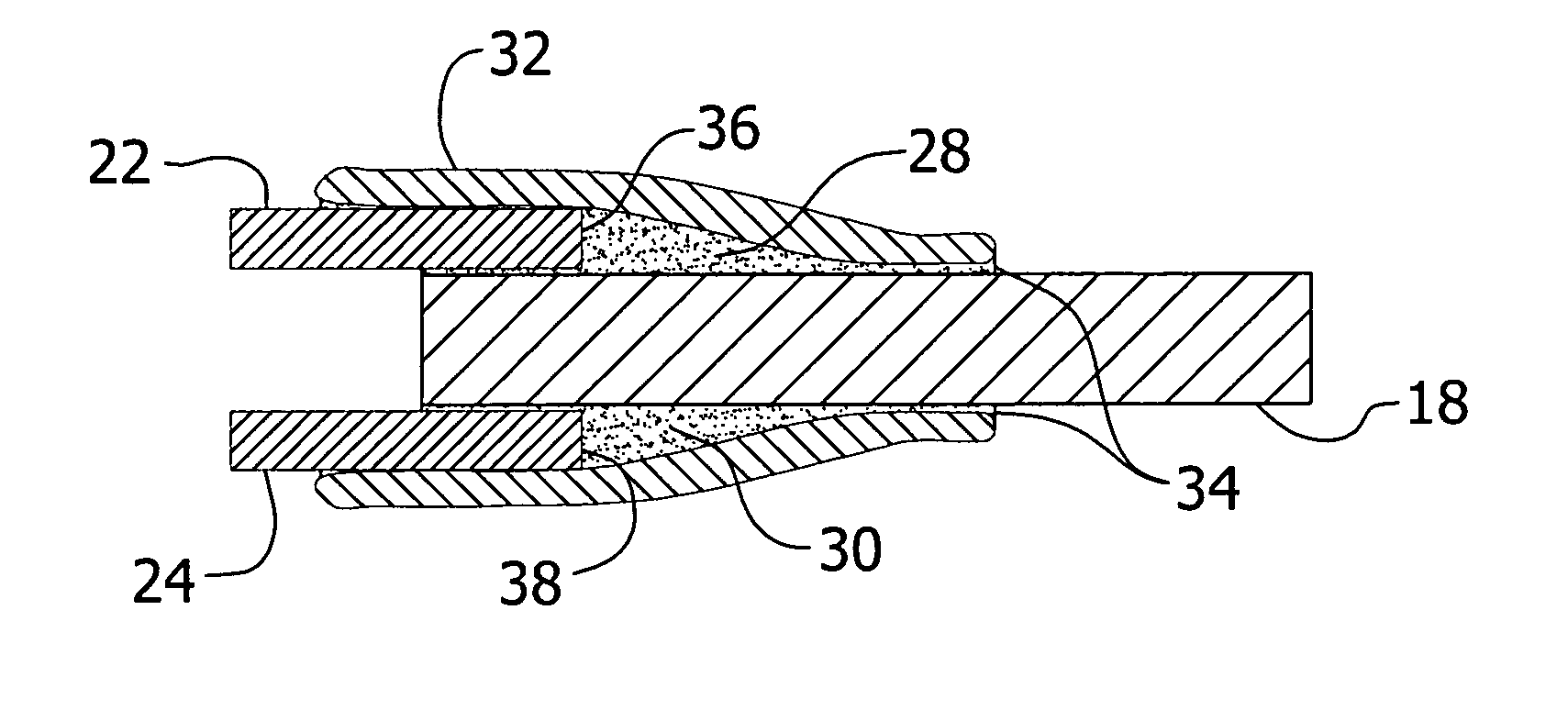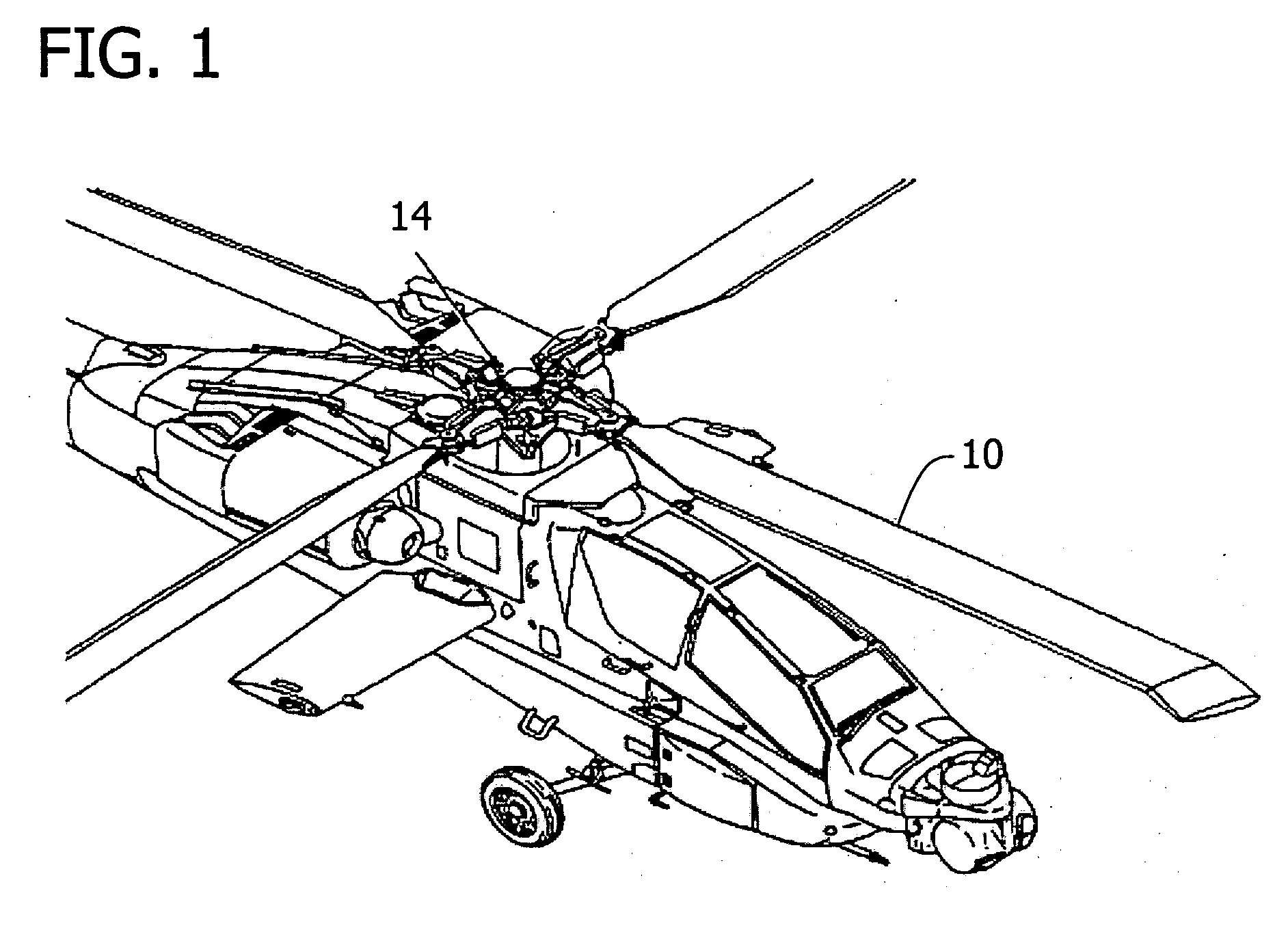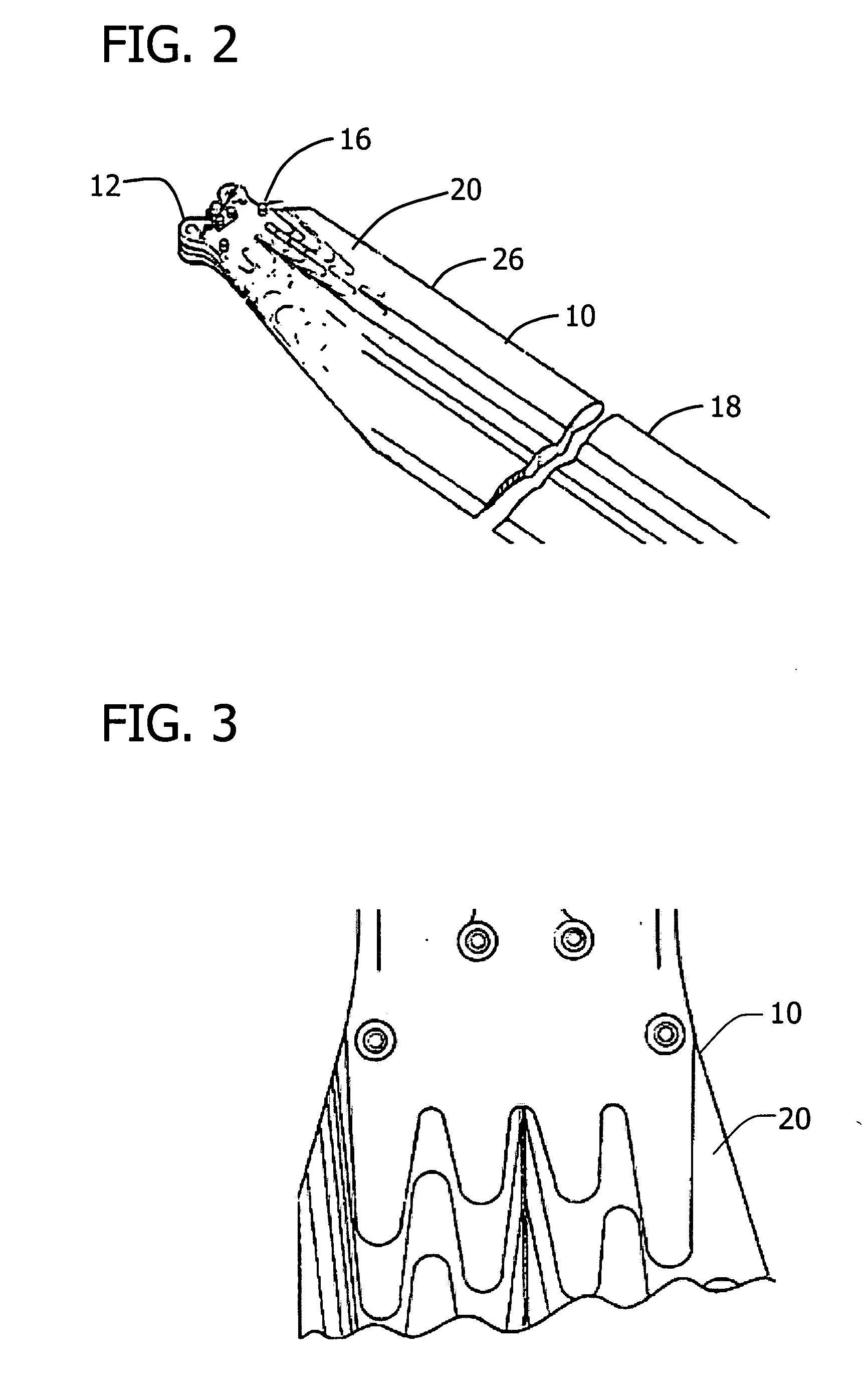Disbond resistant composite joint and method of forming
a composite material and disbond resistant technology, applied in the field of bonded composite products, can solve the problems of composite material delamination, high stress, delamination of multiple components, etc., and achieve the effect of avoiding delamination and optimizing the structure and arrangement of members
- Summary
- Abstract
- Description
- Claims
- Application Information
AI Technical Summary
Benefits of technology
Problems solved by technology
Method used
Image
Examples
Embodiment Construction
[0019] To illustrate an example of an application of a joint made in accordance with the present invention and its method of formation, a helicopter rotor blade 10 is utilized as shown in FIG. 1. A portion of blade 10 is shown in FIGS. 2 and 3. In FIG. 2, a bracket 12 is shown which forms the end of the blade 10 which is used to attach blade 10 to the helicopter rotor 14, as shown in FIG. 1. The bracket 12 forms a part of the root structure 16 used to support the blade 10. The root structure 16 and bracket 12 are typically made of titanium for strength and lightness. As shown in FIGS. 2 and 3 the main portion of the rotor blade 10, which is formed of composite material, is attached to the blade root structure 16 by composite doublers 20 which over lay both portions of the root structure 16 and main blade portion of the blade 10 to secure them together. This connecting structure is shown schematically in FIGS. 4 and 5.
[0020] As shown in FIG. 4, the titanium root structure 16 is form...
PUM
| Property | Measurement | Unit |
|---|---|---|
| Length | aaaaa | aaaaa |
| Electrical resistance | aaaaa | aaaaa |
| Stress optical coefficient | aaaaa | aaaaa |
Abstract
Description
Claims
Application Information
 Login to View More
Login to View More - R&D
- Intellectual Property
- Life Sciences
- Materials
- Tech Scout
- Unparalleled Data Quality
- Higher Quality Content
- 60% Fewer Hallucinations
Browse by: Latest US Patents, China's latest patents, Technical Efficacy Thesaurus, Application Domain, Technology Topic, Popular Technical Reports.
© 2025 PatSnap. All rights reserved.Legal|Privacy policy|Modern Slavery Act Transparency Statement|Sitemap|About US| Contact US: help@patsnap.com



